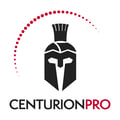Best practices to achieve a superior wet trim
THE BIG CHOP
Cutting down the plants is an essential step in the harvesting process, and can impact the quality of trim you get while wet trimming. If the leaves are allowed to become wilted and sticky, they will be more challenging to trim off.
To prevent this, plants should be cut down only when they can be trimmed within a reasonable amount of time. Also, the plants should be kept cool and have adequate airflow to prevent the leaves from wilting or mildew from forming. Botrytis, aka bud rot can easily set in when plants are left in plastic bags or totes for extended periods of time.
While cutting down large crops, it is best to temporarily arrange the harvested plants in loose piles on top of plastic tarpaulins or in a wheelbarrow – either approach may also allow for easier transportation of the crop from the field to your trimming location. Try not to leave the plants piled up for too long, or compress them, as the vegetative material will begin to decompose. This can also be an issue when plastic bags are used for long-haul transport or storage.
At this point, some growers choose to remove large fan leaves without any trichomes. This will reduce the amount of material going into the trimmer, which will allow for a faster trimmer throughput. Remember, our trimmer throughput weights are based on the weight of wet material entering into the machine, the amount of leaf to bud ratio will impact this greatly.
Setting Up the Hybrid Trimmer
Ensure the machine is set up correctly, and clean prior to use. The leaf collector should be set up so the hose is as straight and short as you can get it. The tumbler should be sitting in the reel end grooves, and the cam follower o-rings should be checked. Ensure the Belt and Bearing Covers are in place, and the lid is installed. Check that the tumbler can be turned by hand, and that there is nothing jammed.
Next, set up the hopper and a conveyor or bin on the outfeed side of the tumbler. Fill the hopper with fresh, loose buds. Break up any clumps of flower stuck together, so that each bud is able to roll through, trimming on all sides.
Operating Tips for the Hybrid Trimmer
Turn on the Leaf Collector, followed by the trimming machine. Feed a small amount at a time, approximately a handful every 5 or so seconds. Keep feeding this way until the trimmer is 40-60% full, making a rolling wave-like tumbling motion through the machine.
If the machine becomes clogged up with too much plant material, turn it off and remove some. Try opening the diverter vent connected to the blower hose to relieve some of the suction, and feed at a slower rate, making sure to break up any clumps of buds prior to feeding into the machine.
If buds are staying inside the trimmer too long, this could be due to feeding too slowly, as the introduction of new material is needed to push the completed buds out. Another option to correct this is to prop up the infeed side of the trimmer to help utilize gravity to help the buds roll through the trimmer more quickly.
Every 3-4 hours the Bed Bar Blade should be removed and cleaned, as resin will buildup underneath of it and cause a decrease in the trim quality. Check out our DIY video for how to do that correctly so it does not affect your blade adjustment! Bed Bar Blade Removal & Cleaning Video
***CENTURIONPRO HYBRID TRIMMING MACHINES OPERATE OPTIMALLY WHEN THE TUMBLER DRUM IS AT 40%-60% CAPACITY.
DEMO VIDEO
The video below is a great example of wet trimming with CenturionPro machines.
